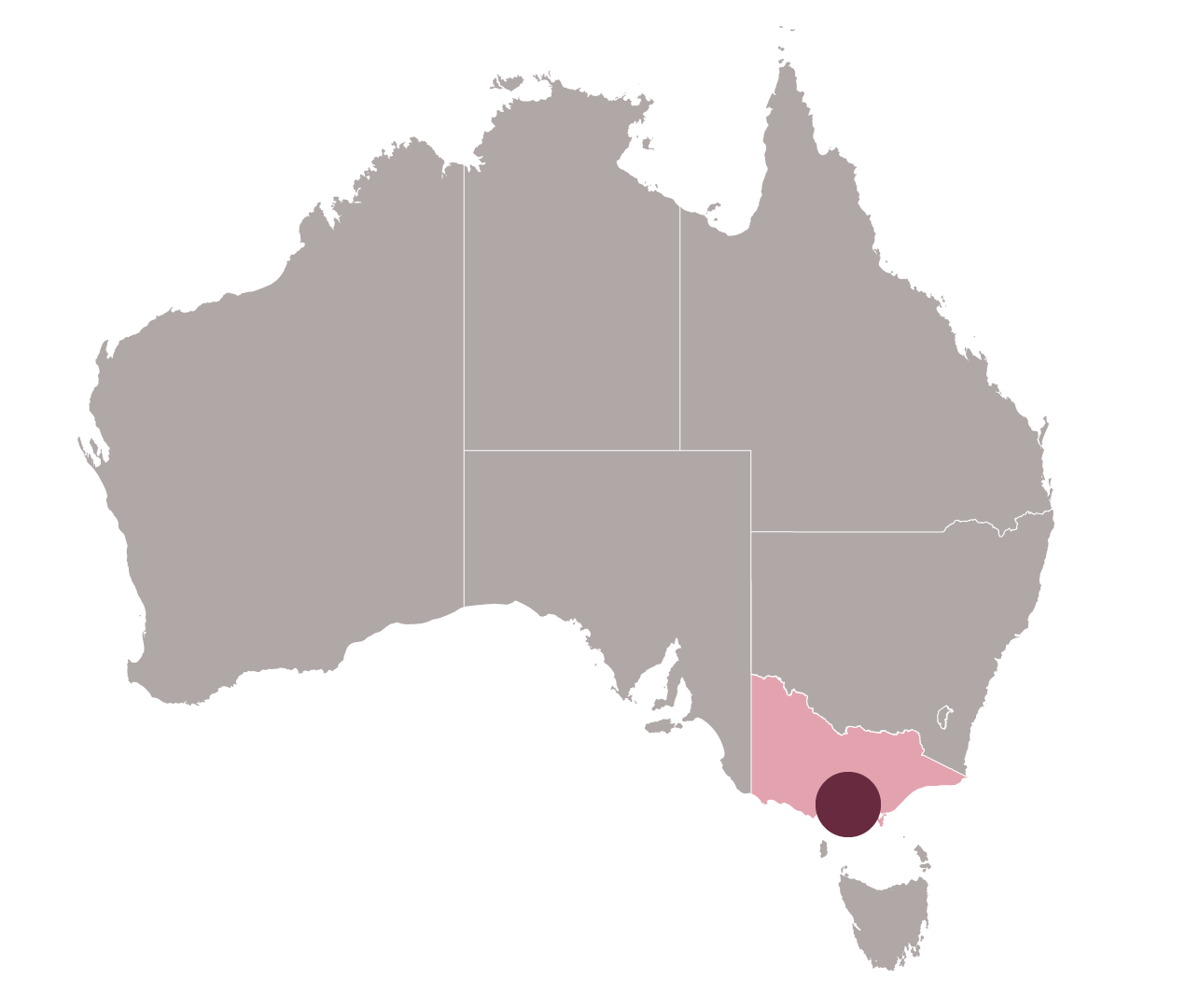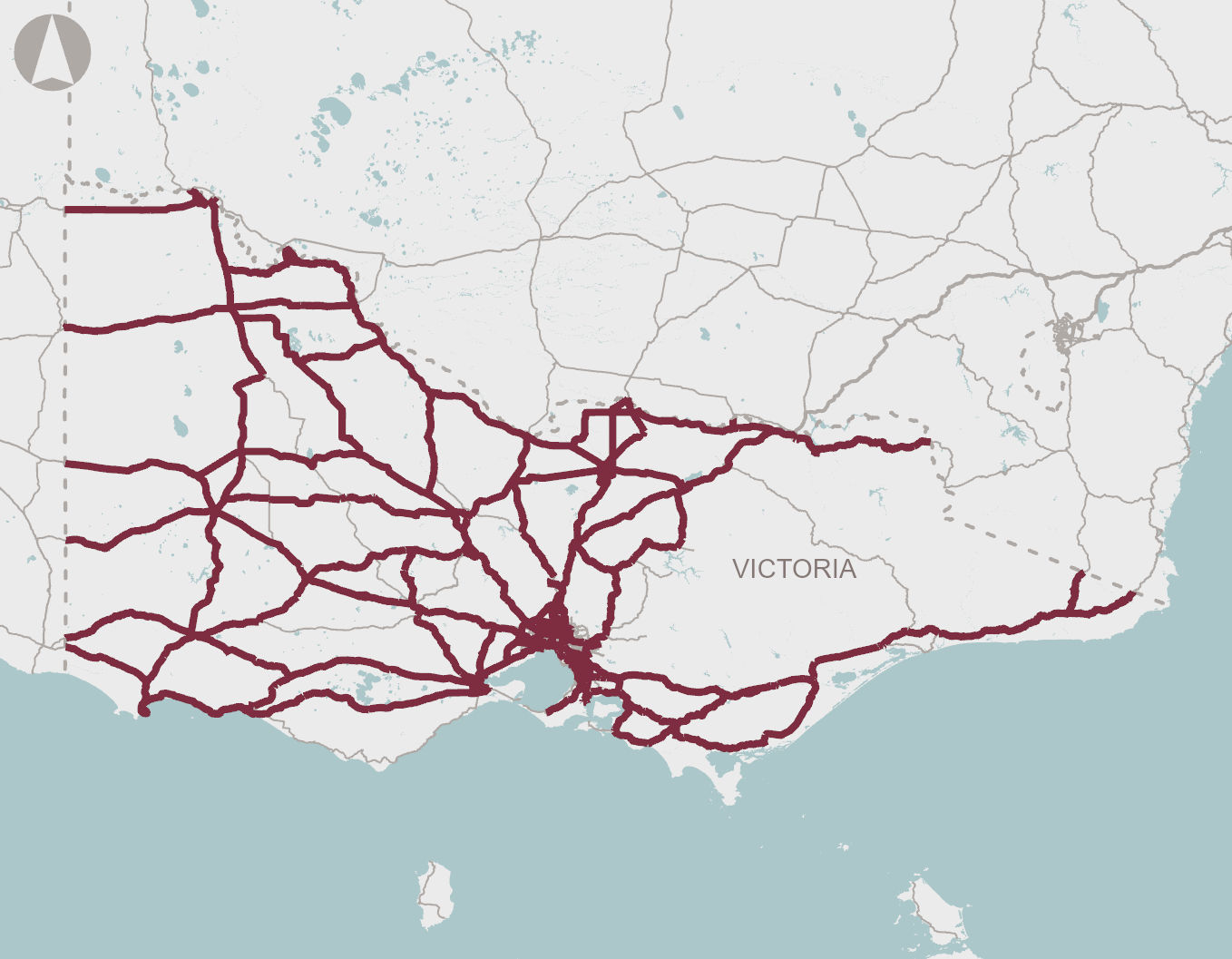

The transport sector accounts for a large proportion of Australia’s greenhouse gas emissions. Changes to heavy vehicle technology such as use of High Productivity Freight Vehicles (HPFVs) and Low and Zero Emission Heavy Vehicles (LZEHVs) can contribute to meeting the emission targets for the transport sector.
Due to mass constraints, many road structures in Victoria cannot accommodate HPFVs or LZEHVs. Despite the Victorian Government’s progressive bridge upgrade program to enable broader network access for HPFVs, mass restrictions remain a problem on some parts of the network with 19 structures still prioritised for upgrade. Additionally, between a quarter (1,600) to a third (2,200) of Victoria’s arterial road bridges and culverts cannot accommodate the higher masses associated with LZEHVs.
Additionally, as current battery technologies do not provide the necessary range and charging speed to make electric trucks viable for long-distance travel, there is an opportunity to support the uptake of LZEHVs by increasing the availability of fast chargers on key routes.
Strategic Fit
The proposal aims to contribute to energy transition objectives by supporting more efficient freight movements and the uptake of LZEHVs. This will drive progress on state and national action plans, including the National Freight and Supply Chain Strategy (NFSCS), achieving key joint objectives of increased productivity and decarbonisation of the freight supply chain.
The proposal responds to a challenge identified in the Australian Infrastructure Audit 2019, “High productivity vehicle use is limited by community sentiment as well as physical and regulatory impediments to access to our road network.”
Improving Victoria’s freight productivity and reducing emissions aligns with the Australian Government’s Infrastructure Policy Statement and a number of Victorian Government policies and plans:
- Victorian Infrastructure Plan (2021) and Strategy (2021-2051).
- Moving more with Less 2021: High Productivity Freight Vehicle Plan.
Societal Impact
Enabling HPFV access to more of the road network by addressing infrastructure constraints is expected to reduce the cost of freight transport, reduce greenhouse gas (GHG) emissions, and address congestion impacts associated with vehicle movements by increasing the uptake of HPFVs or allowing HPFVs to take more direct routes.
Enabling the use of LZEHVs by addressing mass limits and fast charger gaps is expected to reduce GHG emissions and indirectly impact the uptake of EVs for other purposes.
However, increasing the use of heavier freight vehicles across the road network is likely to have some negative impacts associated with more rapid road pavement deterioration requiring increased maintenance requirements.
The submission to Infrastructure Australia did not provide a quantitative assessment of embedded carbon dioxide, as required in the Guide to assessing greenhouse gas emissions.
Deliverability
The submission identifies three suitable approaches to realising the identified problems and opportunities:
- Undertaking strategic planning for a LZEHV fast charging network.
- Undertaking road network assessments to identify and prioritise infrastructure investment that will enable broader use of LZEHVs.
- Progressing planning for options to upgrade HPFV priority structures on the Principal Freight Network.
Proponent to develop potential investment options (Stage 2 of Infrastructure Australia’s Assessment Framework), and complete business case development (Stage 3 of the Framework)
While there is some overlap of the problems and opportunities, the proposal may benefit from being split into two programs that investigates the problems and opportunities for HPFVs and LZEHVs separately.
Infrastructure Australia recommends undertaking further planning that will identify and prioritise road infrastructure interventions, including developing a fast-charging strategy, and upgrade of priority structures on the Principal Freight Network to improve access and uptake of HPFVs and freight LZEHVs.


 EVALUATION COMPLETE
EVALUATION COMPLETE




